Published 5 February 2017 ● Last Updated on 17 July 2021
People often feel that making an eco-friendly choice implies some sort of sacrifice. Perhaps the cost of product is higher, or finding the eco-brand is harder, or it is just not convenient to act in a way that the planet would prefer us to.
There’s a truth to that – but honestly, making sustainable choices isn’t all that difficult! Especially, as we at Secondsguru try to make green living easier for you. Here are 8 effective ways in which you can reduce your carbon footprint – starting from your bathroom. These practical ideas are easy to follow and make a difference. If you’re still reading, I know you are willing to make that small step (and several steps after) for a healthier planet.
1. Don’t buy microbeads
Why? Microbeads are minuscule plastic spheres that are well-known pollutants and already banned, or close to being banned, in several nations including UK, Sweden, Ireland, Netherlands, USA and Canada.
To be honest, I’ve been guilty of it: walking into a headily fragrant store and succumbing to those glittering hand soaps that are seemingly made of candy floss and sparkle and carry the whiff of chewing gum smell which reminds me of school days.
Well, not any more. All it took me to mend my ways was learning how microbeads – those teensy weensy dust-sized pearls – are filling up our water systems. They are nearly impossible to filter and escape water treatment plants, enter water bodies, attract toxins, and are among the plastic debris polluting the ocean and entering food chains.
Yes, those glittery microbeads lose their gleam very quickly once you realise how insidious they are. Much like any crush on Chris Brown dissipates after you see Rihanna’s black eye.
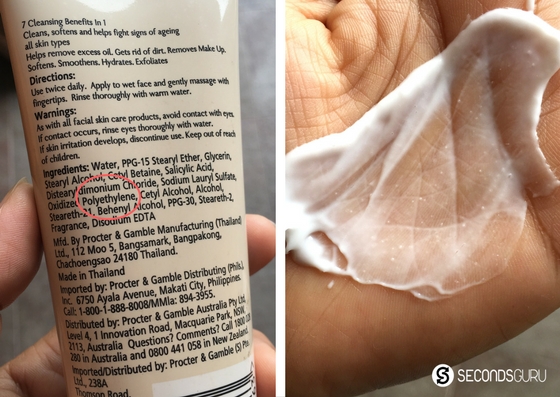
Just ban the microbeads from your bath routine. The look of your hand soap / toothpaste will usually give away their presence. But if you are want to check whether your brand includes microbeads, look for these tell-tale ingredients in its label: polyethylene (PE), polypropylene (PP), polyethylene terephthalate (PET) and polymethyl methacrylate (PMMA).
Tip: There is no dearth of natural ingredients – from salt to ground oats – that you can use for exfoliating effect. I have switched to ground oats for my daily face wash: saved $ AND it works better!
2. Eliminate plastic packaging
Why? Plastic, even if you recycle it, is a drain on resources. It is derived from petroleum; potions must be emptied before recycling [aka water use for rinsing]; and recycling itself uses energy resources.
God may not be everywhere, but plastic sure is. So you are entitled to be cynical at my suggestion that plastic packaging can be eliminated from the bathroom. Yes, eliminating is hard and I haven’t managed it myself; but reducing plastic? You will be surprised at the number of awesome eco friendly bathroom product options you have!
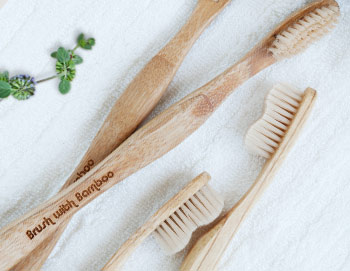
My favorite find as I sought to cut plastic was Brush With Bamboo which I love, love, love. From their inspiring site to quite frankly, their outstanding product [soft yet firm bristles, biodegradable packaging and product], it made me realize that alternatives to plastic products need not be compromises but actually, superior choices! Sadly, I need to order it from Amazon USA, so there is a carbon footprint involved. There are more brands available locally if you would like to experiment: check out Neis House and Bamboo Straw Girl. You can also look up at the many zero waste stores where so many of us organic-loving package-hating Singapore dwellers shop already!
For bin liners, the best option would be to use the packaging you have been unable to avoid; or make paper bags out of waste paper at home. There is the option of the bioplastic bag, but experts are pointing out that they may not be that environment friendly in Singapore. Still, if you prefer bioplastics to buying a fossil fuel product, then brands such as BioGreen and Telobag are easily available at major Singapore supermarkets in all sizes.
Tip: When it comes to liquid soaps and shampoos, it is impossible to avoid plastic in the supermarket. But if you are willing to experiment with brands and textures, the following recommendations will help!
3. Go old school with bars
Why? Soap bars are typically lower on eco-toxicity, and packaged in more eco-friendly materials.
A marketing guru walked into a bar… and well, the joke’s on us. Body washes are a staple in our bathrooms nowadays, considered more luxurious and superior to soap bars. But are they?
Companies fan our enthusiasm (and misplaced beliefs) because body washes are more profitable for them. Truth is soaps typically use plant-based oils and are equally hygienic, whereas liquid washes are usually petro-based, and need masking scents to cover up their ingredients.
What’s more, when you look at the environmental factors, the case for bars strengthens further. Bars use lesser packaging (mostly paper-based); body wash bottles – always plastic. Moreover, bottles need to be emptied before recycling, and rinsing them adds to water-treatment plants’ burden. Bars use lesser water in production; and have a lower carbon footprint during transport (lower weight). You may need more water during a bath using a soap versus bar – but if you use your shower mindfully, I reckon the maths still holds in the bar’s favour!
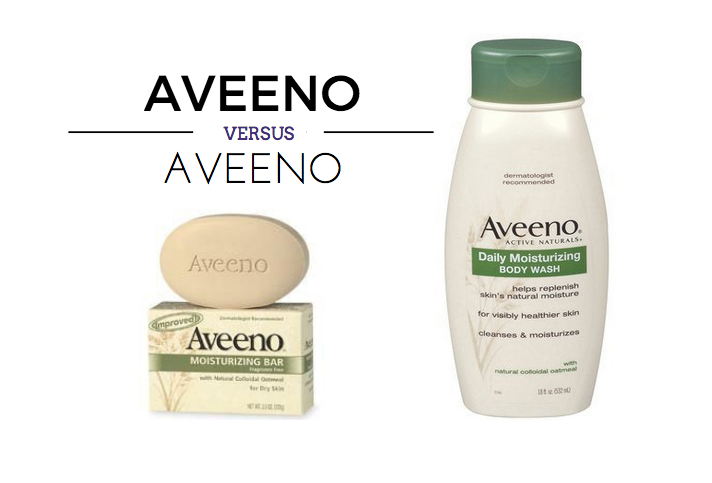
Luckily for us, bars may be “traditional”, but they are still around. So perhaps your favourite body wash already comes in a bar form and you don’t need to switch brands! I found that my favourite Aveeno is easily available as a bar. I compared the two i.e. Aveeno moisturizing bar with the Aveeno daily moisturizing body wash on EWG’s skin deep cosmetics database. The differing ingredients lists AND body toxicities [compare the list on the links] are in line with the research I have been doing: typically more perfume, petrol base and chemicals in a body wash. Alternately – go artisanal with brands that give use minimal, nourishing ingredients – such as Mira – and even carry that luxe feel!
Tip: If you think the bars are too large for your kids’ hands – just cut them in halves. If the hygiene factor bothers you despite the research I’ve linked, keep separate soaps, and rinse the soap lightly before/after use. Use a soap dish that allows for drainage so you don’t end up with scum. Still not convinced about bars? Okay – opt for refillables from zero waste stores in Singapore!
4. Read the fine print; choose quality ingredients
Why? High quality natural ingredients are good for your skin – and for the environment. And do I really need to make a case for lesser chemicals you expose your skin to?
One of the best ways to reduce consumption is to read the label (the ingredients label, not price!). It works beautifully when you are choosing food to eat, and it works beautifully when you are choosing food for your skin too. Ingredients on personal products give you a good indication of what the manufacturers want you to know (or hide). Unreadable lists with chemical names you don’t recognise? Avoid. Clear notification of what is sourced, from where, and why? Go for it.

There is a reason why brands like The Body Shop and Lush rule brand trustworthiness lists (and also cost more): they care where they get their raw materials from. I am currently a Lush hair girl – I love that they have minimal packaging, and use recycled materials when they do. They have the bar option for soaps and even shampoos. And their product label is as short as I have ever seen – with limited shelf life because they avoid preservatives.
Tip: Wondering how your current brand scores? Search on the Environmental Working Group database. Find out how the product you use scores on allergies, immunotoxicity. hormone disruption, and more. Here’s a ready watchlist of ingredients that you should look out for in personal products.
5. Go local – or make your own goop!
Why? The closer we are to the production process, the more sustainable our choices tend to be.
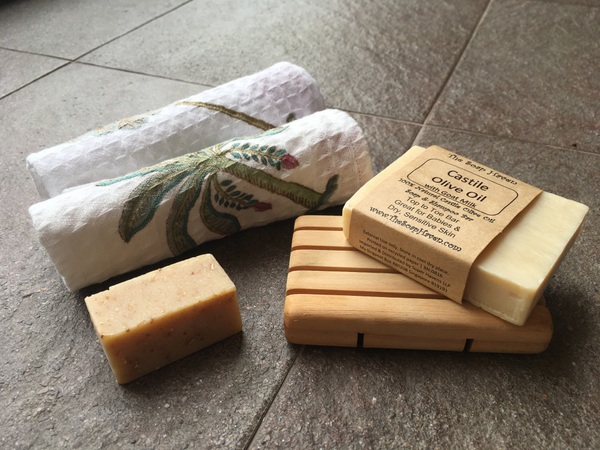
If ever there was a time for completely inexperienced newbies to try a hand at something they know nothing of, it is now. We’re in the information age – we have YouTube, we have Wikipedia, hell, we even have alternate facts. In other words – don’t hold back – just google on how to create your own masks / creams / scrubs / lotions and lock them up in Pinterest-inspired maison jars. But seriously, the maker movement is gaining ground and I’ve seen moms actually glowing with beauty (and pride) after using handmade lotions they’ve received on Mother’s Day.
If, despite my imploring, you still lack confidence, check out Militza’s workshops at the Little Green Dot, and she’ll take you through the paces of creating your own skin care products.
Tip: Don’t have the time and energy to fix your own potion? See our calendar where we keep a track of DIY workshops and farmers’ markets (among other events!) in Singapore. You’re bound to find hand-made beauty products there!
6. Avoid harsh chemicals in your clean-up
Why? Harsh chemicals in your bathroom are a burden on water treatment, contain toxins that affect your body – and not even necessary to achieve cleanliness.
I first started looking at non-toxic cleaners for my house when my infants turned into crawlers. Honestly, with twins, you can imagine I didn’t get much research done; I stayed glued to Google just long enough to figure that I had been completely overdoing the scrubbing routine. Anti-bacterial agents were increasingly being identified as a problem rather than a solution. Fancy-sounding ingredients were being identified as hormone disruptors. My cynicism fuse tripped and I simply went cold turkey on floor cleaners – I switched to plain water. And it worked just as wondrously as anything else!
I still have a mental block about changing the toilet cleaners, but this looks promising – home-made enzyme cleaners. But in the meantime, I am using Simply Good‘s tablets – long-lasting, carbon-efficient, and… they get the job done sparkling clean! (What do YOU use? let me know what you use in the comments below!)
Tip: Over time I have realised that baking soda and vinegar are versatile beyond compare . They can kill microbes. They can banish foul smell. They can clear blockages. It’s a dream team!
7. And of course: use lesser water
Why? Save water to reduce the load on water procurement and water treatment –saving on your water bill is an added bonus.
About half of the water consumption in Singapore homes is in the bathroom, and most of that, in the shower. So if you are to make a difference in your household’s water footprint, you must begin here.
To start with, check your shower routine. Can you use a bucket? (That’s the best option.) Else, can you stick to the 5-minute shower recommendation? If you must croon as you clean, can you at least turn the water off while you sing it out? Keep in mind that a 10-minute shower uses a whopping 90 litres of water.
Flushes are also a big drain – accounting for 17% of water usage in Singapore homes. The best way to reduce use here would be to move to low-flow WCs or dual-flush systems when you are investing in a bathroom overhaul. For immediate impact, include a water spray to reduce toilet-paper use, move to bamboo-based toilet papers, and as always – use mindfully!
Basin usage is easily managed through mindful washing, and I am sure you intuitively know the right thing to do. Use a mug for brushing. Shut the tap when not rinsing hands. A running tap runs through 2 litres in 2 minutes – so no idling please!
Wondering how you score on water usage? The next time you get your utilities bill, compare your water usage to Singapore’s average. (The comparative chart is usually printed at the back of the bill.)
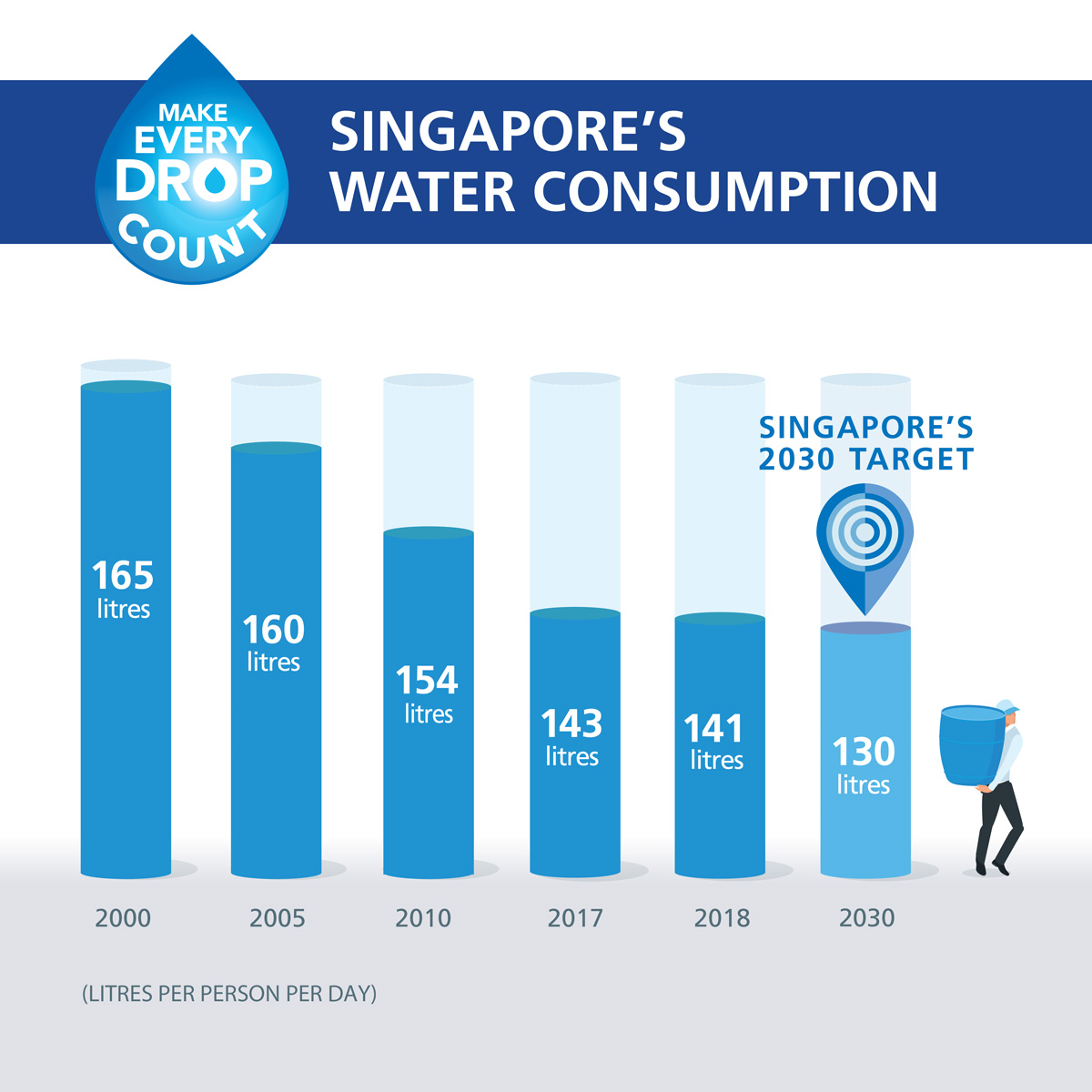
Tip: We are all creatures of habit, so start training your kids young. The good news is the greener bath choices are in fact easier: kids find it easier to handle a mug than manipulating taps and shower heads; and it is safer to manage temperature control of water when using buckets.
8. Recycle, and recycle well
Why? Incorrect sorting of waste taxes the recycling process.
Did you know 30%-50% of Singapore’s household recycling collection ends up at the incinerator instead of the recycling plant… all because of incorrect recycling by people! OK, we have dedicated a whole separate article on that topic. But while we are talking about bathrooms, let’s ensure there are no leaking bottles being handed in. Also, empty out containers before sorting them in.
Check if your beauty product accepts package returns – if so, and use their system for more efficient recycling.
Tip: Don’t be shy: if you purchased a product you disliked after hardly using, ask around if your friends or family would like to give it a try!
Share if you care!
Related articles
Zero Waste Cleaning | Everyday items we use that cut the toxicity, the grime and the cost!
Buying without packaging? These shops make zero waste possible in Singapore



Noelle
11 February 2017Thanks for the tips! I wonder whether using an electric toothbrush may be more eco friendly? Somehow I find that electric toothbrush heads last way longer than usual toothbrushes so the replacement time is longer. Would be perfect if the heads are not made of hard plastic though.
Anuja Byotra
11 February 2017Gadget afterlife is a tricky thing! I’d pick a bamboo toothbrush over electric ones on account of e-waste.
In my experience, bristle lives vary a fair bit brand to brand; but for the bamboo brush I currently use, the tell-tale “flowering” hasn’t occurred even after several months use. I hope it works for you if you choose to try it!
Tejaswini Tilak
10 February 2017Thanks for tips!
Any suggestions for liquid hand wash? Refill packs are hard to find and I feel terrible throwing out plastic bottles each time!
Tejaswini Tilak
10 February 2017Thanks for the tips! Am on soap bars already and going to switch to bamboo brushes.
Any tips for liquid hand wash? I feel terrible throwing out plastic bottles each time – but refill packs aren’t easy to come by.
Anuja Byotra
10 February 2017Hi Tejaswini, glad you find the tips useful!
On liquid hand wash, I’d go for the same label/ingredient-reading test. Eco-friendly brands typically give a lot of info in the fine print on their packaging [instead of just patenting a name that sounds eco!], and I reckon there are products on the aisles with minimal and quality ingredients. Personally, I like Method [methodhome.com] which is not tested on animals, formulated largely by plant products, and packaged in recycled plastic bottles of the highest grade. They are reasonably priced and available easily on Cold Storage 🙂
Anuja Byotra
25 June 2021Further update for anyone following this chain of comments! Look up the zero waste stores in Singapore – such as Scoop – to grab some fab refillable hand washes, body washes etc. [link at the end of the article]
Nonita
6 February 2017Love it. Easy to incorporate and I’m so happy to report already doing most! Need to buy the bamboo toothbrushes though … I think whole foods beauty store a block from me might have these.
Anuja Byotra
7 February 2017Let me know how you like the bamboo change!
Pooja
6 February 2017I know you guys consistently do good work, but this is especially brilliant. Some of these are so easy to incorporate.
Anuja Byotra
6 February 2017*wipes tear* Thanks for your support Pooja – couldn’t have reached here without you 🙂